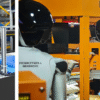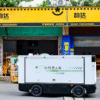The AI and robotics industry is undergoing a profound transformation from “single-point intelligence” to “holistic integration”. The logistics sector, with its well-defined business ecosystem and extensive application scenarios, has emerged as the frontline for cutting-edge technology implementation.
This historic process cannot be achieved without the deep empowerment of leading enterprises. Looking at the market, from JD Logistics’s ambitious billion-yuan procurement plan to the intensive industrial investments by internet giants like Meituan and ByteDance, major corporate capital is exerting unprecedented strength and strategic patience to accelerate technological maturity, cultivate industrial ecosystems, and compete for the key “entry tickets” that define the future industry landscape.
How do these giants bet on logistics robots?
In 2025, the industry is witnessing an unprecedented sense of urgency. AI large models are no longer confined to the intangible digital realm but are now making substantial inroads into the physical world through various tangible implementations.
Logistics is one of the key sectors undergoing substantial transformation. As a vast network composed of countless nodes, the industry is massive in scale and holds significant importance. According to data released by China Federation of Logistics & Purchasing (CFLP) and National Development and Reform Commission, the total revenue of the logistics industry in 2024 was 13.8 trillion yuan, a year-on-year increase of 4.9%, accounting for as high as 14.1% of GDP.
Logistics robots have consistently delivered clear commercial returns. Core capabilities like path planning, floor-level material handling, human-delivered goods systems, and intelligent distribution center scheduling all translate into measurable efficiency gains in real time. As large-scale AI models become more deeply integrated, these robots are evolving from simple action executors to sophisticated systems that understand environments, collaborate dynamically, and make adaptive decisions. This transformation is propelling the entire logistics ecosystem toward greater embodiment, intelligence, and organic integration.
Amid this trend, major manufacturers have intensified their focus on logistics robots, with particularly active strategic moves this year. To clearly outline the latest industry developments, China Mobile Robot Industry Alliance (CMRA) and New Strategy Mobile Robot Industry Research Institute (NSRI), have systematically analyzed recent strategic deployments of these giants using publicly available data.
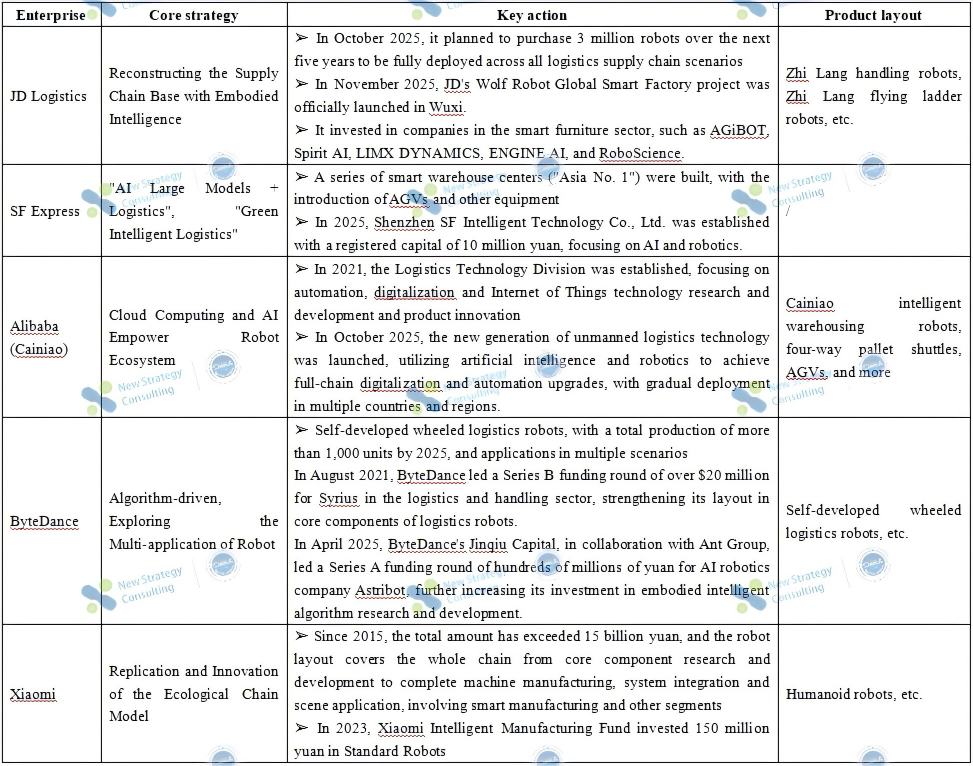
In this grand feast of capital and strategic planning, major internet giants have carved out distinct paths, each shaped by their unique DNA.
From “Machine Replacing Man” to “Global Intelligence”
The strategic positioning of industry giants and capital flows vividly demonstrate three major transformative shifts in the AI-powered logistics robotics sector.
The core of logistics robots is being reshaped by large AI models, evolving from “functional machines” that execute preset programs to “agents” capable of sensing, understanding, and making autonomous decisions. Whether it’s Cainiao’s intelligent warehouse robots rapidly matching optimal storage locations with the help of large models, or ByteDance’s self-developed wheeled logistics robots demonstrating autonomous learning and dynamic path planning capabilities, the maturity of cutting-edge technologies lies behind them.
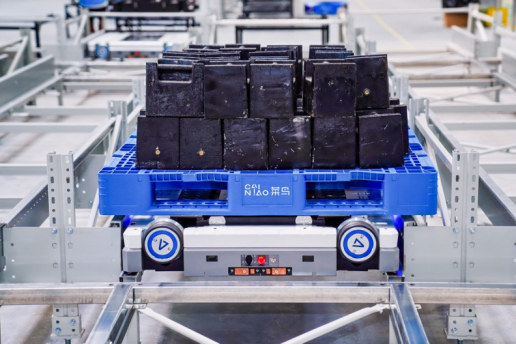
The competitive landscape has evolved, shifting focus from individual robot performance to the holistic efficiency and coordination of the entire logistics chain. Future intelligent logistics systems will be an integrated ecosystem where diverse robotic solutions operate under a unified AI ‘brain,’ achieving seamless collaboration.
Meanwhile, the industry’s focus is shifting from speculative capital to tangible industrialization. Investors are adopting a more pragmatic approach, moving beyond chasing ‘innovative concepts’ to evaluating ‘industrialization capabilities’. The launch of Cainiao’s next-generation unmanned logistics technology and JD’s Wolf Robot Super Factory exemplify the industry’s entry into a dual-phase challenge: achieving mass production and establishing a closed-loop commercialization system.
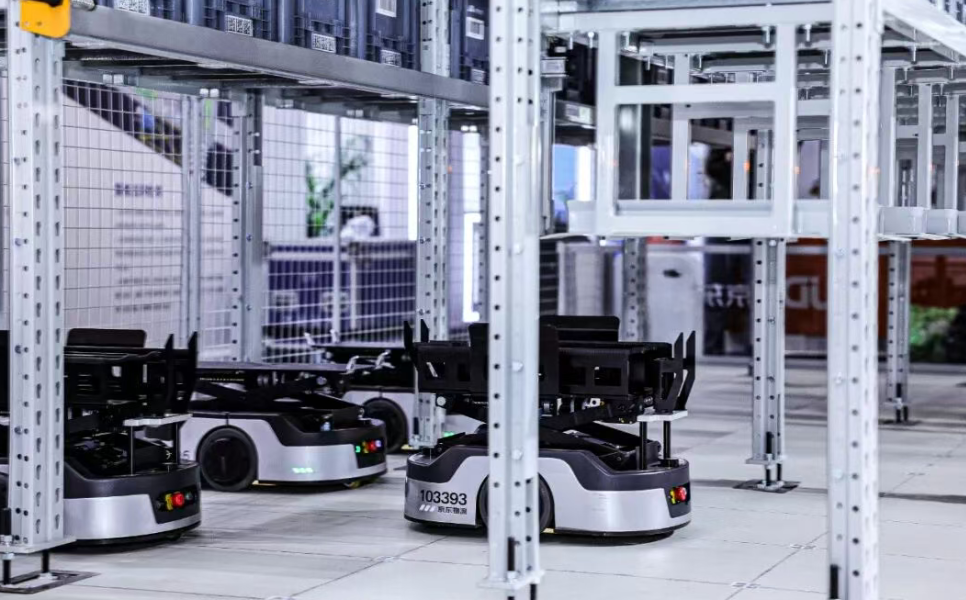
Whether an enterprise can overcome the cost threshold, achieve stable and reliable large-scale deployment, and form a healthy business cycle has become the key point that determines whether an enterprise can go to the end.
Challenges and Prospects: Building a New Industrial Ecosystem
Despite the hot capital and promising prospects, the industry still faces severe challenges.
Capital has a clear “head-siphon” effect, with a few star enterprises capturing the majority of attention and resources, while numerous mid-tier and lower-tier enterprises with potential still require more capital with industrial vision to activate the innovation vitality of the entire industry.
At this pivotal moment of transition, the industry needs more than ever a platform to build consensus, pool resources, and foster cross-sector collaboration.
The 8th Annual Conference on Mobile Robot Industry Development & the 3rd Premium Supply Chain Expo for Mobile Robots and Humanoid Robots & the 3rd Ecological Conference for Embodied Intelligence Humanoid Robot Scenario Application 2025, scheduled to take place in China from December 3 to 5, serves as a pivotal industry dialogue platform amid the AI-driven wave of logistics robotics.

With breakthroughs in embodied intelligence and surging demand for intelligent logistics solutions, the industry requires a professional platform to systematically map technical progress, showcase implementation outcomes, and foster consensus. This annual conference is uniquely positioned to fulfill this pivotal role.
The conference gathered prominent industry experts to share insights on current status, technological advancements, and future trends, helping the industry gain a clearer understanding of the evolution and future direction of logistics robots in the context of embodied intelligence.
This annual conference is centered on the theme’ Embodied Intelligent Logistics Robots in the AI Era,’ with key focuses including but not limited to:
Zhang Lei, Chairman of CMRA and Chief Technology Officer of Siasun, will deliver a speech themed ”The AI Wave Endows Mobile Robots with New Connotation and Mission”
Xiong Rong, Distinguished Professor of Qiushi College of Zhejiang University and Director of Zhejiang Humanoid Robot Innovation Center, will make a speech themed “Discussion on the Development of New Generation Logistics Robot”
Yao Zhijian, Chairman and General Manager of Gen-song, will make a speech themed “Deep Integration of AI: New Strategies for Smart Logistics Solution Providers to Break the Block”
X-Mover will give a speech themed “Collaborative Innovation of Distributed Digital Intelligence New Warehouse and Mobile Robot”
KUKA (China) will deliver a speech themed “AI Large Models Reshape AGV/AMR: The Leap from ‘Functional Machines’ to ‘Agents'”
Bai Hongxing, Executive Director of GALAXIS and Dean of the Artificial Intelligence Research Institute will make a speech themed “New Choice for Efficient Narrow Lane Operations: VFR Logistics Embodied Intelligent Robots”
Yang Hua, Regional Director of Linde will give a speech themed “Harmonious Logistics: Linde Reshaping the New Enterprise Logistics Ecosystem”
Through these diverse perspectives from academia, solution providers, and major robotics manufacturers, ‘AI + logistics robots’ is no longer just a trend prediction, but a tangible future.
Meanwhile, major industry reports such as the 2025 China Mobile Robot (AGV/AMR) Ten-Year Development Yearbook and the Quadruped Robot Scenario Application Development Blue Book 2025, providing systematic, authoritative, and decision-making references for the upstream and downstream of the industrial chain.
At that time, more than 500 corporate CEOs and senior leaders will attend the event, with over 80 high-quality supply chain enterprises gathered at the exhibition area. Whether you want to look for partners, identify technological turning points, or seize opportunities in the global market, this annual conference will be definitely a window to observe the future of the industry and a key platform to drive the development of China’s intelligent logistics industry.
Conclusion
The AI-powered logistics robotics race has evolved beyond isolated technological or product comparisons into a comprehensive contest of patience, testing entire ecosystems and industrial strategies. These giants are now investing substantial capital, betting on a tangible future.
This sweeping industrial revolution, fueled by technological breakthroughs and capital power, has just begun. The answers and paths for the future will gradually become clear and well-defined through in-depth exchanges, intellectual clashes, and pragmatic collaborations across all sectors of the industry.

